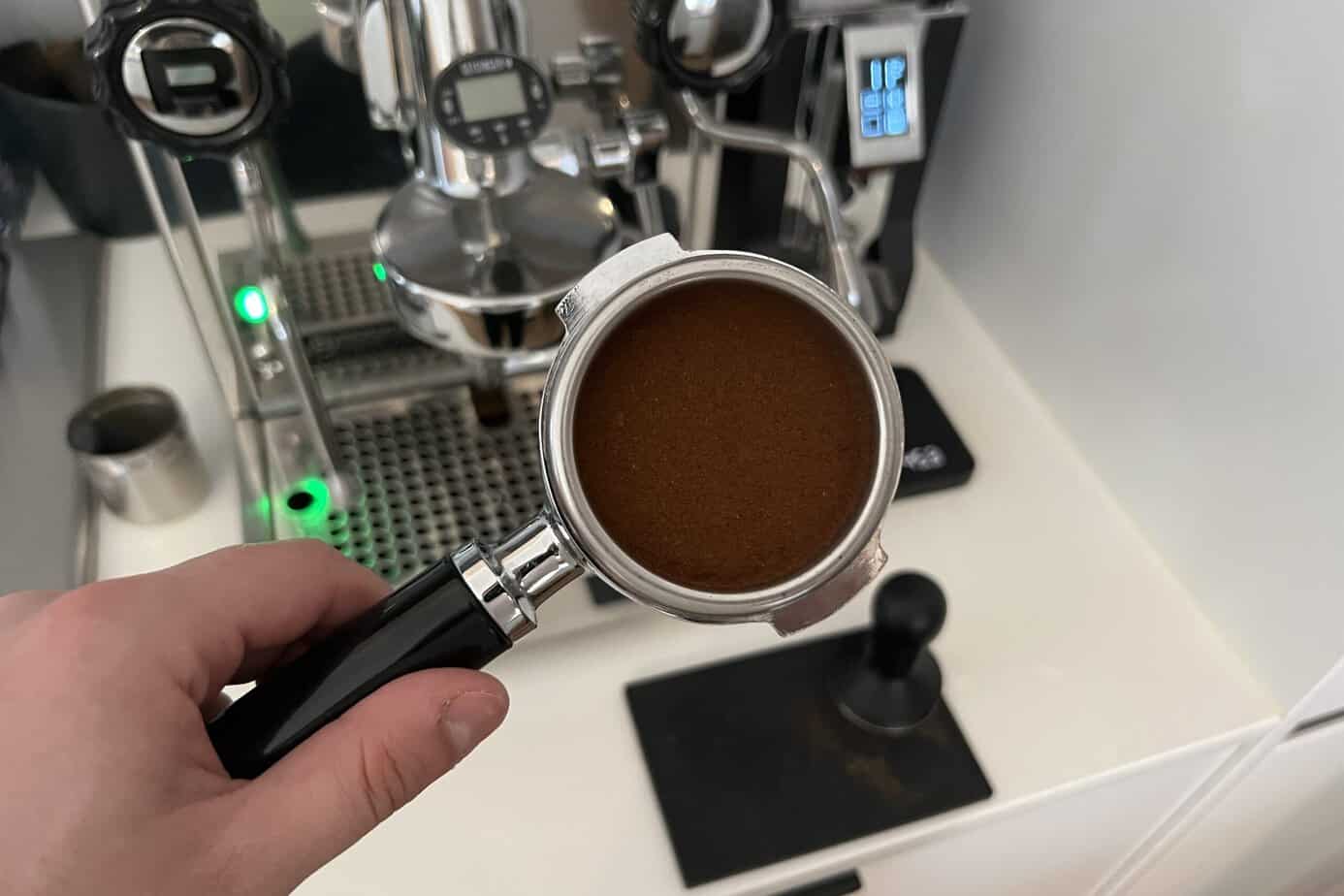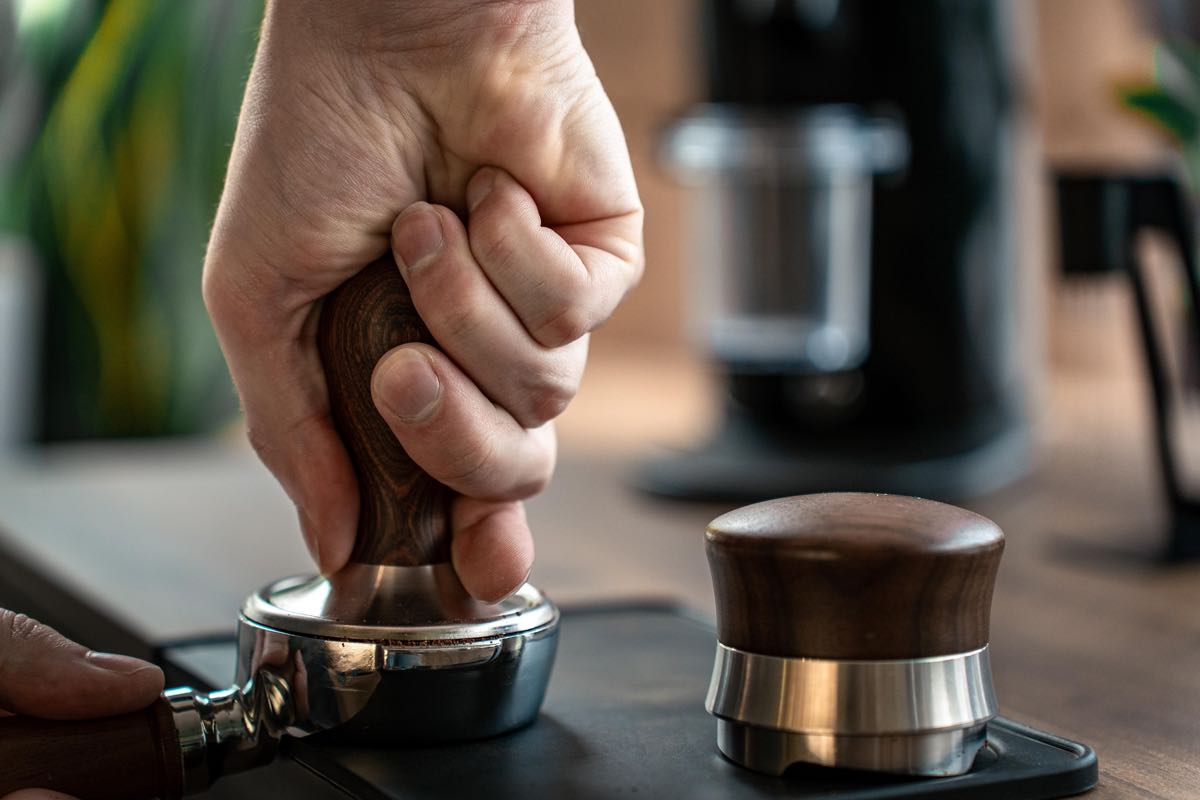If you're new to making espresso at home, one of the most frequent questions you'll encounter is how hard you should tamp the coffee grounds. Tamping plays an essential role in the espresso-making process, but it's not always clear how much pressure you need to apply. Too little tamping can result in a weak and uneven extraction, while tamping too hard can cause over-extraction and bitterness. So, how do you find the right balance? Let me take you through my experience and thoughts on how hard you should tamp when making espresso at home.

The Role of Tamping in Espresso Extraction
Before diving into the specifics of tamping pressure, it's important to understand the role of tamping in the espresso process. Tamping helps compress the coffee grounds into a smooth, even puck, which ensures water flows through the coffee evenly during extraction. The pressure applied during tamping is vital for achieving this evenness. Without tamping, the water will find paths of least resistance, leading to channeling and uneven extraction.
I've found that achieving consistent tamping pressure is essential for creating a balanced shot of espresso. But, as with many things in the world of espresso, the right approach can be a little subjective. So, how do you determine how hard to tamp?
How Hard Should You Tamp When Making Espresso at Home?
There’s no one-size-fits-all answer, but in my experience, tamping should be firm but not excessive. Ideally, you want to tamp with around 30 pounds of pressure. This pressure is enough to create a compact and even puck of coffee without making the espresso too compressed. I’ve seen some baristas recommend tamping with a force that’s “about the same as a handshake,” but if you’re looking for something more precise, 30 pounds is a good rule of thumb.
The idea behind this pressure is that it creates a uniform puck with a compacted surface area. This will help ensure that the water flows through the grounds evenly, producing a smooth and well-balanced shot of espresso.
How Consistent Should Your Tamping Be?
Consistency is key when making espresso, and tamping is no exception. Over time, I’ve realized that it’s not just about how hard you tamp, but also about how consistently you apply that pressure. If your tamping pressure is inconsistent, it can lead to uneven extraction and, ultimately, a subpar espresso.
One of the easiest ways to ensure consistency is by using a tamper that fits comfortably in your hand. A tamper with an ergonomic design will help you apply the right amount of pressure consistently with each shot. It’s also essential to tamp in a level, straight motion. You want to apply the same amount of force across the entire surface of the coffee grounds.
Factors That Influence Tamping Pressure
While 30 pounds of pressure works as a general guideline, other factors can influence how hard you should tamp. Over time, I’ve learned that the grind size, coffee bean type, and even the humidity in the air can affect the tamping process. Here's a breakdown of how these factors come into play:
Grind Size
Grind size is one of the most important factors in espresso extraction. Finer grounds require a bit more pressure to tamp, while coarser grounds are easier to compress. When I’ve used a finer grind, I’ve found that I need to tamp with a slightly firmer hand to achieve the right puck density. Conversely, with a coarser grind, a gentler tamping is sufficient to achieve the same result.
Coffee Bean Freshness
Freshness plays a role in how the coffee behaves during tamping. Freshly ground coffee tends to expand slightly after being tamped, which can affect the compression. If you’re using freshly ground coffee, you may find that you need to apply a little more pressure to ensure a good seal. On the other hand, older coffee beans might not expand as much, so you may not need to tamp as hard.
Humidity and Temperature
Believe it or not, the environment can affect the tamping process. On more humid days, the coffee grounds can be a bit more resistant to compression. If you’re working in a humid environment, I’ve found that tamping with a bit more pressure helps to overcome this resistance. Similarly, temperature can influence the extraction process, as warmer coffee grounds may not pack as densely as cooler ones.
Why Tamping Too Hard Can Ruin Your Espresso
While it’s essential to apply adequate pressure when tamping, it’s also important to avoid tamping too hard. When I first started out, I tended to tamp with excessive force, thinking it would improve my espresso. However, tamping too hard can actually lead to undesirable results.
One of the risks of over-tamping is causing the coffee puck to become overly compacted. This can restrict the flow of water, leading to over-extraction. Over-extraction can result in a bitter, unpleasant taste in your espresso. Additionally, tamping too hard can damage the filter basket or cause uneven water flow, leading to an imbalanced shot.
Why Tamping Too Lightly Is Also Problematic
On the flip side, tamping too lightly can also have negative effects. If the coffee grounds are not compressed enough, the water will flow through them unevenly. This uneven flow leads to channeling, where water finds pathways through the coffee puck, leaving some parts under-extracted and others over-extracted. The result is an unbalanced, inconsistent espresso that lacks the richness and complexity we all strive for.
I’ve found that tamping too lightly is especially common when you’re new to espresso. It’s easy to under-apply pressure, thinking that the coffee will extract just fine. However, this can result in weak, watery espresso. A proper, moderate tamp ensures that the coffee puck is evenly compressed, allowing for an even and controlled extraction.
How to Test Your Tamping Pressure
If you're unsure whether you're tamping with the right amount of pressure, there’s a simple test you can do. After tamping, take a close look at the surface of your puck. If it’s level and smooth, you’re probably on the right track. If it’s uneven or has cracks, you may need to adjust your tamping technique.
Another way to test tamping pressure is by brewing the shot and tasting it. If the espresso tastes bitter or harsh, it could be a sign that you’ve tamped too hard. On the other hand, if the shot is watery or lacks body, you might need to apply a little more pressure when tamping.
Tools That Can Help You with Tamping
Over time, I’ve discovered that the right tools can make tamping much easier and more consistent. Here are a few tools that I highly recommend:
A Good Tamper
A high-quality tamper is essential for consistent tamping. Look for a tamper that fits your portafilter snugly and feels comfortable in your hand. Some tampers even come with calibrated pressure indicators that let you know when you've applied the right amount of force.
A Leveling Tool
A leveling tool can help ensure that the coffee grounds are evenly distributed before tamping. This can prevent uneven tamping and ensure a more uniform puck, leading to a more consistent extraction.
A Scales or Dosing Tool
Using a scale to measure your coffee dose can help ensure that you're working with the right amount of grounds each time. This can make tamping more predictable and help you dial in the pressure for optimal results.

Final Thoughts on Tamping Pressure for Home Espresso
In conclusion, tamping is an essential part of making great espresso, but the amount of pressure you use can vary based on several factors. From my experience, tamping with around 30 pounds of pressure is generally ideal. However, consistency is just as important as the amount of pressure you apply, so always try to maintain a steady and uniform tamp.
Ultimately, tamping is about finding the right balance that works for your coffee, your environment, and your personal preferences. With practice and attention to detail, you’ll be able to create excellent espresso right from the comfort of your own home.
Frequently Asked Questions
Q: How hard should I tamp when making espresso at home?
A: Ideally, you should apply about 30 pounds of pressure when tamping your espresso grounds. This is enough to create a compact and even puck, which helps ensure a smooth and balanced extraction.
Q: Can I tamp too hard when making espresso?
A: Yes, tamping too hard can over-compress the coffee puck, restricting the flow of water and leading to over-extraction. This can result in a bitter taste and an imbalanced shot of espresso.
Q: What happens if I tamp too lightly?
A: Tamping too lightly can cause uneven extraction due to channeling, where water flows through the coffee puck unevenly. This results in weak, watery espresso with an unbalanced flavor.
Q: How do I ensure my tamping is consistent?
A: To ensure consistency, use a tamper that fits comfortably in your hand and apply steady, even pressure each time. Practice maintaining the same level of pressure and tamping technique for each shot.
Q: Can the grind size affect how hard I should tamp?
A: Yes, the grind size does affect tamping pressure. Finer grounds require a firmer tamp, while coarser grounds are easier to compress. Adjust your tamping pressure based on the grind size to achieve an even extraction.
Q: Should I use a tamper with a pressure indicator?
A: Using a tamper with a calibrated pressure indicator can help you ensure you’re applying the right amount of force. This tool can be especially helpful for beginners who are still learning the correct tamping pressure.
Q: How do I know if my tamping pressure is correct?
A: After tamping, check the surface of the coffee puck. It should be level and smooth. If it’s uneven or cracked, you may need to adjust your tamping pressure. Additionally, tasting your espresso can help determine if the pressure is right. If the shot is bitter or watery, the tamping pressure may need to be adjusted.
Q: Does the humidity affect tamping pressure?
A: Yes, humidity can impact how the coffee grounds behave. On more humid days, you may need to apply slightly more pressure to achieve an even puck, as the grounds can be more resistant to compression.
Q: What is the best tamper for home espresso?
A: The best tamper is one that fits your portafilter snugly and feels comfortable in your hand. A tamper with a flat, ergonomic handle will allow you to apply consistent pressure every time. Some tampers also come with calibrated pressure features for added convenience.
